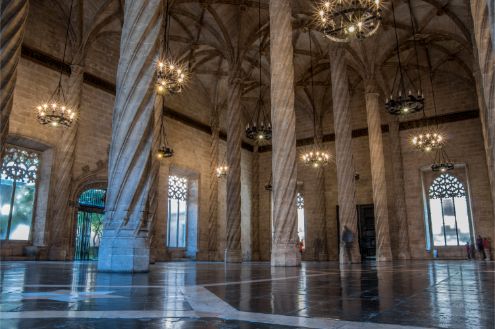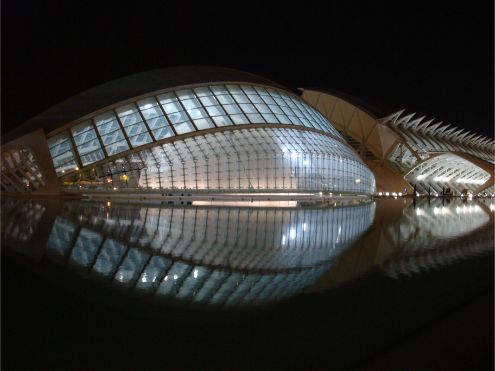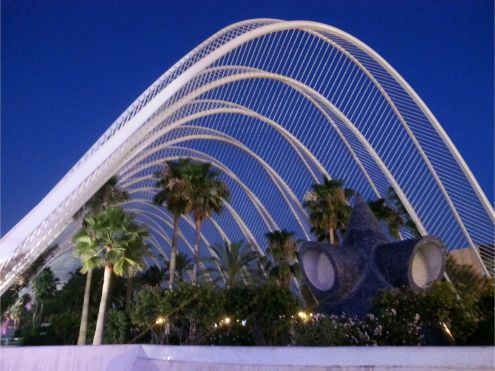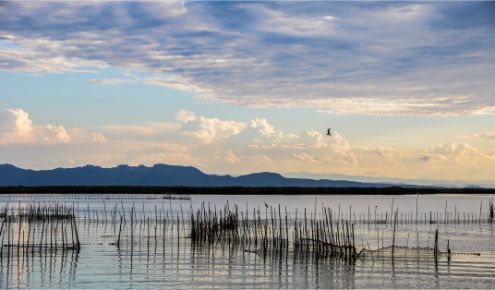Valencia, on the Iberian peninsula’s eastern Mediterranean coastline, is the third largest city in Spain. The city is well known internationally for the traditional five-day Falles festival every March, as well as the annual Tomatina tomato fight which comes to the nearby town of Buñol every August. Not to mention its gastronomic delights; paella was born in the city, and other traditional dishes include arròs negre (black rice), tortilla (Spanish omelette), and horchata, a popular breakfast or snack drink made from the local chufa fruit, into which fartons can be dipped.

Image Credit: stefano Merli
Valencia has numerous must-see sights for visitors, including the 13th century gothic-style cathedral which offers fantastic views from the top of the Miguelete tower, the 14th century Serrans Gate, one of the twelve gates that formed part of the ancient city wall, and the UNESCO-listed Llotja de la Seda Silk Exchange, which is a large decorated space supported by twisted columns, where merchants traded their goods. The Central Market, in Valencian Art Nouveau style, is one of the largest in Europe.

Image Credit: losmininos
In terms of modern architecture, the futuristic City of Arts and Sciences cannot be missed and is iconic in terms of Valencia today; indeed, it is listed as one of the 12 Treasures of Spain. This Ciutat de les Arts i les Ciències sits in the park formed in the riverbed of the Turia, which was rerouted following a terrible flood in the 1950s. The centrepiece of the structures is the Hemisfèric, which resembles a giant eye and is home to the IMAX cinema, planetarium, and laserium. The interactive science museum is held in the largest exhibition centre in Spain, a structure which takes the form of a whale’s skeleton; the ground floor houses a basketball court, but above can be found various exhibitions on the sequencing of human DNA, as well as those entitled “Zero Gravity”, “Space Academy”, and “Marvel Superheroes”. The Umbracle is an open structure containing plant species indigenous to Valencia, as well as an outdoor contemporary art sculpture gallery.

Image Credit: Brianna Laugher
Other structures in this futuristic area of the city include l’Oceanogràfic, an oceanographic park representing different aquatic environments and over 500 different species, the Palau de les Arts Reina Sofia, an opera house and performing arts centre, the Pont de l’Assut de l’Or, a bridge crossing the riverbed and forming the highest point in the city, and the Àgora, which holds concerts and sporting events.

Image Credit: keith ellwood
Head out of the city on the number 25 bus for the natural beaches at the heart of the Albufera Nature Park, where you’ll find dune-lined beaches and the Playa de Pinedo traditional fishing village. There are plenty of walking routes in this Park area to explore the water birds and plants. In the city itself, the beaches of La Malvarrosa and El Cabanyal offer fine sand and beach-dining options. The latter is part of a fishing district with a traditional way of life; huts, cabins, tiled facades and coloured buildings in the maze-like structure of passageways give an authentic atmosphere unlike that found in large cities.

Image Credit: Mark Chinnick
There are no shortage of events in the city. Among others: until 20th October 2019, there is a multimedia Van Gogh Alive exhibition in the Old City at the Ateneo Mercantil, there is live music at the Alamedia in the City of Arts and Sciences on Friday afternoons until early October, and the Valencia Boat Show takes place at the beginning of November.
Title Image Credit: Nan Palmero (Image Cropped)